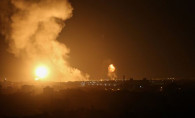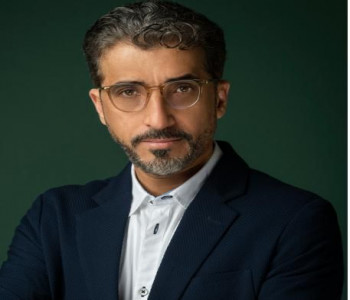Auschwitz commandant's house opens for 80th anniversary
Auschwitz commandant's house opens for 80th anniversary

By AFP/Dario THUBURN
Overlooking a gas chamber and a crematorium at Auschwitz, a large house inhabited by the Nazi death camp's commandant is to become a centre for the global fight against anti-Semitism and extremism.
The three-storey grey house, which connects to the camp via an underground tunnel, was shown to the media by project organisers for the first time on Monday on the 80th anniversary of the liberation of Auschwitz.
"This is the house of the worst extremist in history," Mark Wallace, a former US ambassador to the United Nations and the founder of the Counter Extremism Project, told reporters on a media tour.
The house of Rudolf Hoess, who lived there with his wife and five children, is next to the wall of Auschwitz and has been in private hands until now.
Its rooms have been stripped bare and only a traditional Jewish mezuzah -- a small case containing a tiny scroll of parchment inscribed by a prayer -- has been added to the doorframe of the main entrance.
After coming into possession of the house, organisers found some objects from the era in the attic, including an SS mug, newspapers and boot polish.
The trousers of a striped prison uniform with the insignia of a Jewish political prisoner were also found there, used to plug a hole in the roof.
The Oscar-winning film "The Zone of Interest" about Hoess and his family was partially filmed in the house, which was built in 1937 and once had a sprawling garden, a swimming pool, greenhouses, a sauna and a stable.
'Power to purify'
Hoess, an SS officer, began building up the camp in 1940 when the first Polish prisoners arrived. After the war, he was captured and testified at the Nuremberg trials and was eventually hanged at Auschwitz in 1947.
Auschwitz was the largest of the extermination camps and has become a symbol of Nazi Germany's genocide of six million Jewish people, one million of whom died at the site between 1940 and 1945, along with more than 100,000 non-Jews.
The camp barracks are clearly visible from what was believed to be Hoess's study on the first floor and the children's bedrooms on the second floor.
"He was not only the master of life and death there, he lived like a king here," said Hans-Jakob Schindler, a senior director at the Counter Extremism Project.
Some critics have warned the project risks feeding morbid interest in Hoess, with the British historian Simon Schama, who is Jewish, calling it "repellent".
"It will be all about the movie and the perpetrator leading a 'normal' life and do nothing to teach anyone about the ordeal of the Jewish victims," he said.
The plan is for the house to be turned into a research and education centre over the coming months.
There will be a photography section dedicated to Auschwitz victim and lens maker Lore Sternfeld and a music project in partnership with composer Francesco Lotoro, who has been researching the music composed in concentration camps around the world for four decades.
For the project's inauguration, Lotoro played a lullaby composed by Adam Kopycinski, a conductor of the first orchestra at Auschwitz.
"I think this music has the power to purify this place... It can re-start the clock of history again," he said, after playing on a piano in the house.
"I have gone and found life where there was death."






